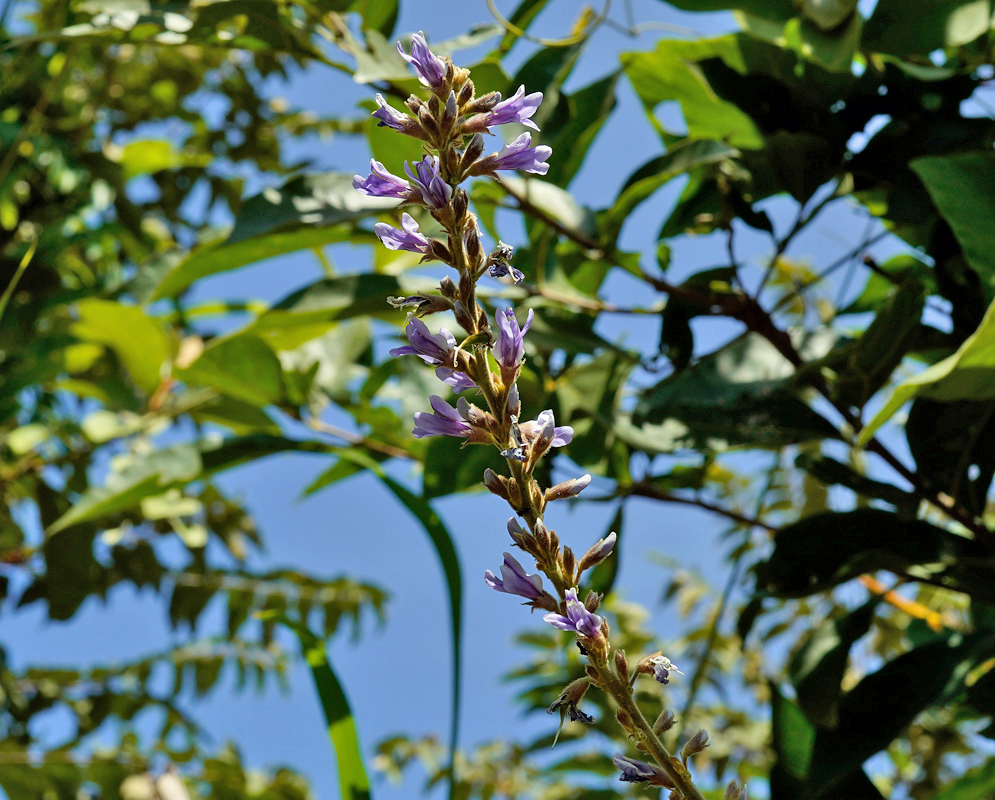This post has 11 Simple Fields-fields attached. Show fields.

Calopogonium caeruleum is native to tropical regions of the Americas. It is a perennial twining or trailing legume that thrives in warm, humid environments.
The inflorescences are elongated racemes that can reach over 12 in long, bearing numerous small flowers that open sequentially from the base upward. Each bloom is about 0.3–0.4 in across, with the typical papilionaceous shape of legumes, displaying violet to bluish petals that fade as they age. Flowering can occur year-round. Beyond its ornamental appeal, Calopogonium caeruleum is sometimes used as a cover crop in agroforestry systems due to its nitrogen-fixing ability, contributing to improved soil fertility. It is easily propagated by seed or stem cuttings and can form dense ground cover in managed plantings. Photographed in Panama.

